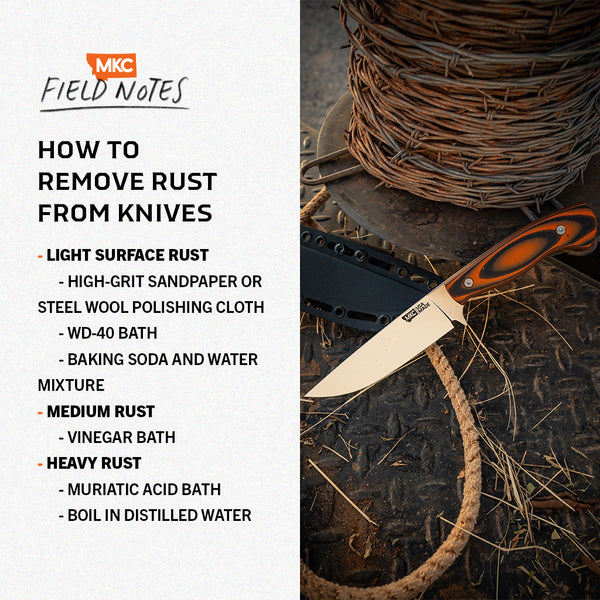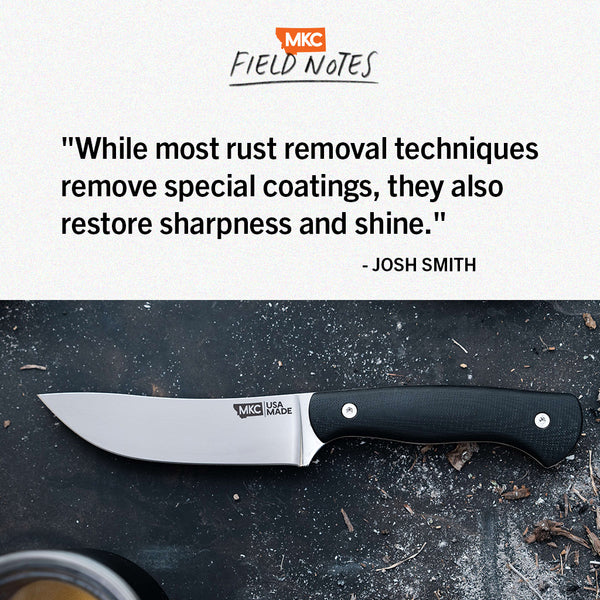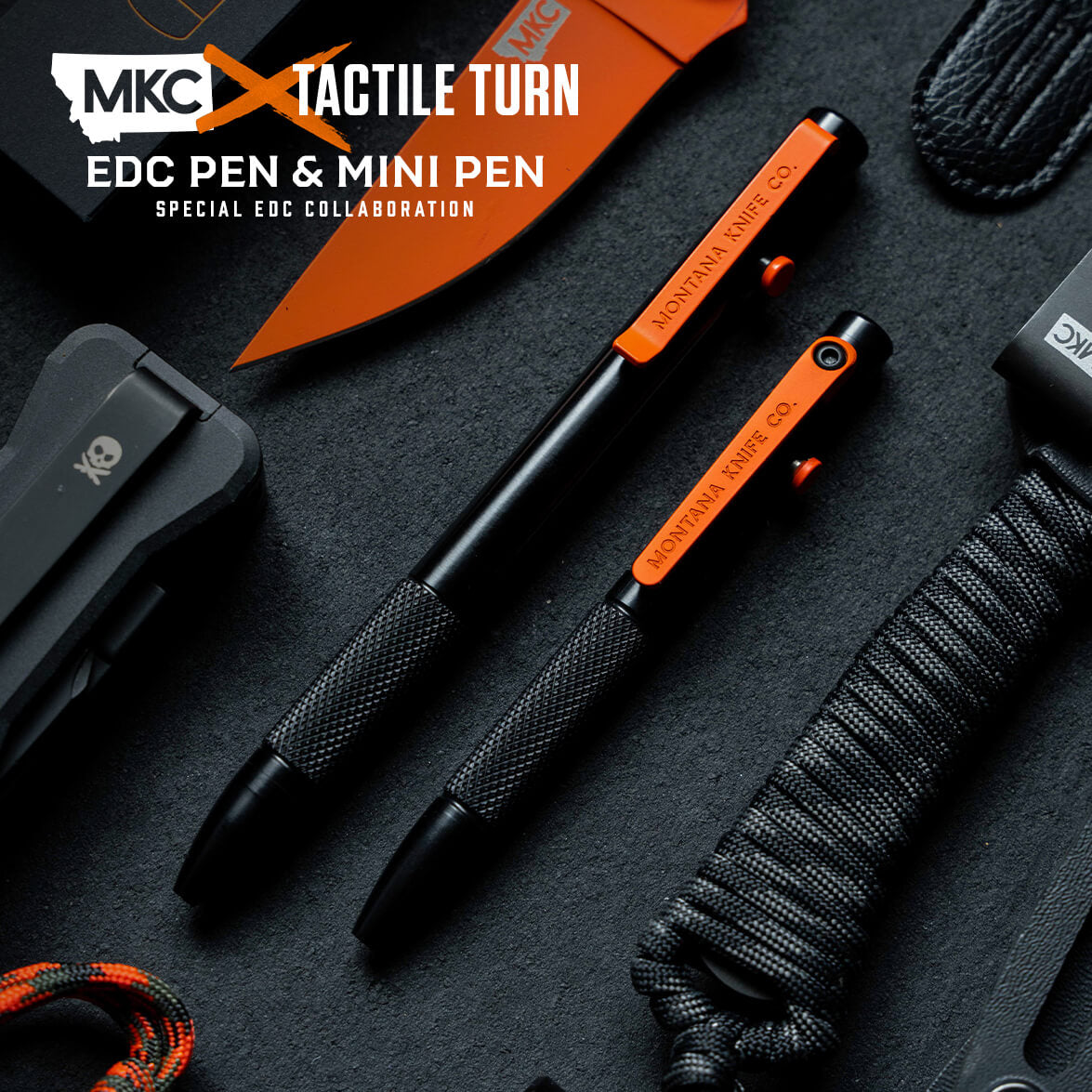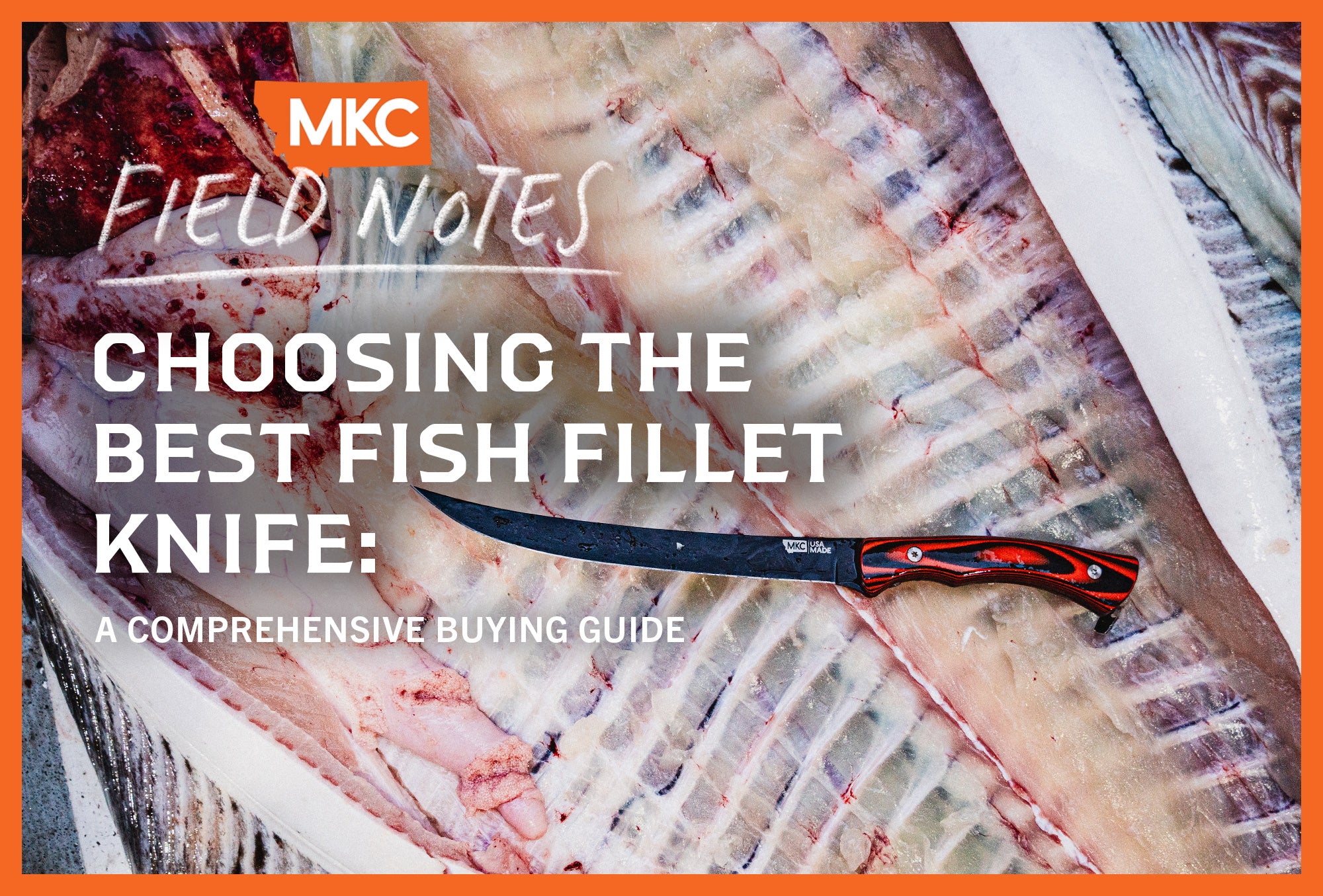A while back, I explained how to prevent your knives from rusting. However, even the most prevention-focused knife owners make mistakes from time to time.
What do you do when the worst happens? Can you restore knives that have already oxidized?
Fortunately, you can. While most rust removal techniques remove special coatings, they also restore sharpness and shine. Let me teach you what I know about how to remove rust from knives.
What Happens When Knives Rust?
Rust is the oxidation of the steel’s surface. When the elements within steel come into contact with oxygen — especially mixed with moisture — a rust layer forms. That’s why you see humidity absorbers and dehumidifiers inside storage safes.
Storing your knives in a dry place is important. However, if you live in a humid area, it’s tough to prevent rust from forming.
Some knife coatings delay the onset of rusting. We Parkerize our carbon steel knives here at MKC, which helps prevent rust. Stainless steel knives are also less susceptible to rust.
However, proper care of any knife is still important. With enough abuse, even stainless, Cerakoted, and Parkerized knives rust eventually.

How to Remove Rust from Knives
Before I teach you how to remove rust from knives, I need to share a disclaimer: The rust removal methods I recommend below may alter or remove the finish on your blade. Any logos, markings, or satin/polished finishes may end up damaged.
The abrasives and chemicals involved in these techniques can affect non-steel coatings or surfaces. Be cautious if your blade has special coatings or finishes you want to preserve.
The best method to remove rust depends on the extent of the oxidation. I’ve broken removal methods down according to rust severity below.
Light Surface Rust
Light surface rust calls for gentle removal techniques. Use high-grit sandpaper or a steel wool polishing cloth to abrade the rust away. I recommend 2000-grit, but you can go down to 1200 at the roughest.
If you’re not getting anywhere with a sanding cloth, try soaking your blade in an oil like WD-40 to help loosen up the rust. Then, use a clean rag to scrub away the remaining rusty spots.
A mixture of baking soda and water can also work well on light surface rust. Baking soda paste is naturally abrasive, and the soda’s effervescence lifts the rust away.
Medium Rust
If your blade’s rust has progressed beyond a light surface dusting, move on to vinegar. Vinegar is a powerful cleaning agent and a strong acid. It’ll eat away at carbon steel blades, but it works well on stainless.
Soak your blade in vinegar for the best results, but keep an eye on it. Vinegar will remove any Parkerization from your knife.
Heavy Rust
If your blade has extensive rust, your next step might be muriatic acid. Muriatic acid is powerful and dangerous to handle. Use personal protective equipment such as rubber gloves, a respirator, and eye protection.
Only use this method for far-gone blades, such as one you found lying out in the woods. Again, this method is only for stainless steel.
You can also boil your blade in distilled water to loosen rust. I’ve never tried this method myself, but I’ve heard positive things from others.
Your knife may have pits and dents left over after the rust removal process. Extensive rust may have already eaten away at your blade. Removing the rust will expose any pristine metal, but it can’t put back what’s eroded.
Natural Patina vs. Rust
I want to note the difference between a knife’s natural patina, which develops over time, and rust from misuse or improper storage.
A little patina isn’t bad. A carbon steel blade naturally patinas over time from normal use. I take pride in the look of a brand-new MKC knife, but that shiny surface doesn’t last forever.
Even if you care for your knife perfectly and wax it regularly, an aging effect will occur. To me, age gives a blade character. You can take a stainless steel blade back to a brand-new finish, but that’s difficult to achieve with carbon steel.
If you’re concerned with maintaining your knife’s original finish, soak it in oil regularly. However, don’t feel alarmed as the finish wears over time — that aged patina improves its beauty and utility.

How to Remove Rust From Knives: Final Thoughts
Now you know how to remove rust from knives, but that doesn’t mean you should let them rust. Prevention is still the name of the game. However, if you want to maintain a pristine blade forever, you may need to adjust your expectations.
Embrace the changes to your knife’s character that happen over time, as long as they don’t involve neglect. A knife is like an old truck that gains value with age and experience. We all grow old and change eventually — why shouldn’t your knife?
by Josh Smith, Master Bladesmith and Founder of Montana Knife Company






































